Interviews, People, Surf culture, Surf MoviesA Final Conversation with Bruce Brown
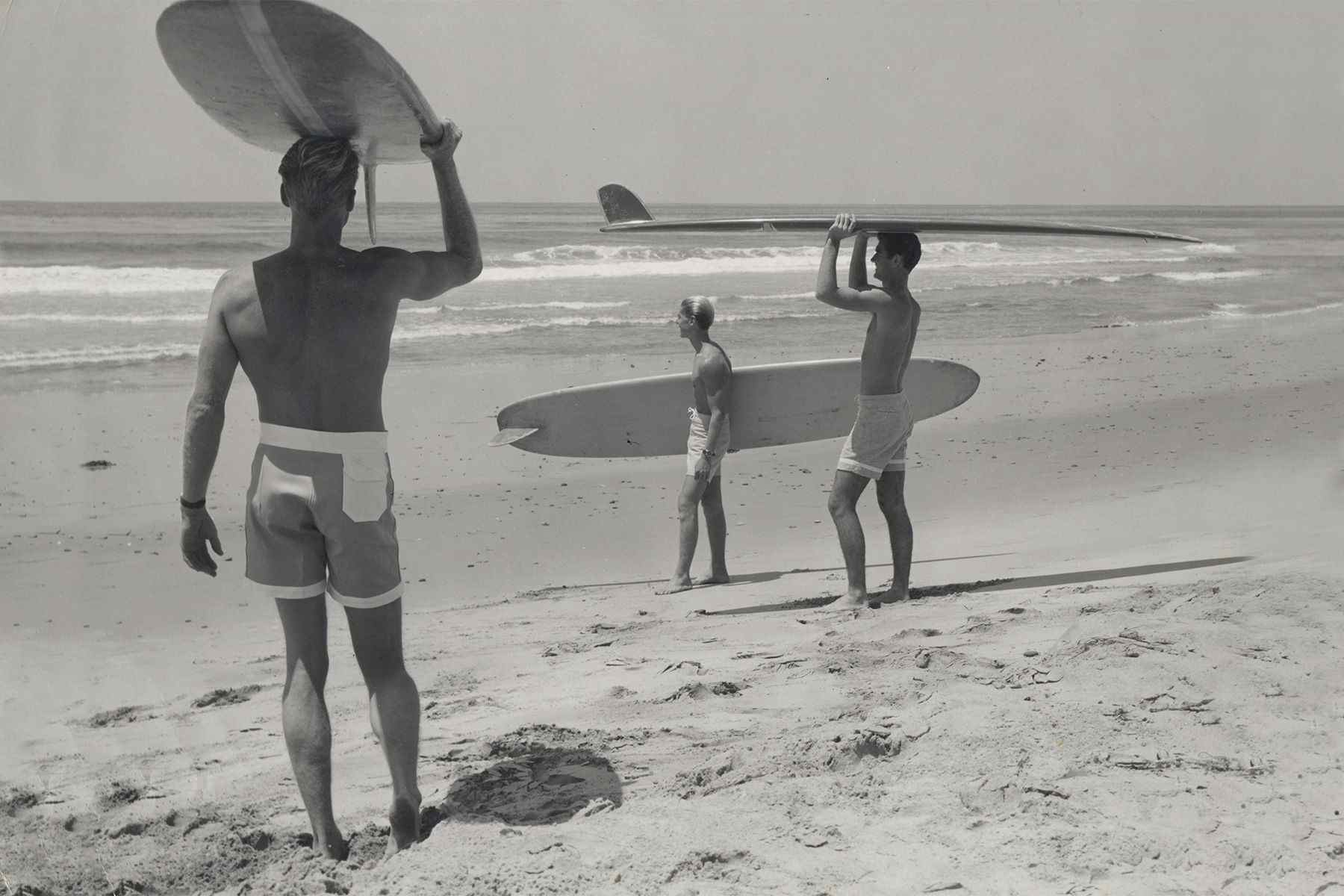
Bruce Brown
December 1st, 1937 – December 10th, 2017
Bruce Brown, the father of surf movies and perhaps the most iconic and recognisable voice in the world of surfing, passed away peacefully in his sleep on Sunday. He was eighty years old.
A few weeks back, Surf Simply Podcast presenter Harry Knight and I were invited to interview Bruce as part of his promotion of The Endless Summer limited edition book and memorabilia collection celebrating the fiftieth anniversary of the seminal film’s cinematic release in 1966. We spoke with Bruce for a little over an hour, neither of us quite believing that the voice on the other end of the call was not narrating a surf film that we’d watched countless times, but was in fact answering our questions. Little did we know that it would be Bruce’s last interview, and that we’d be publishing the podcast episode and this accompanying article in tribute, as an obituary.
Bruce lived a life rich in experiences, both before and after his Endless Summer chapter, and we touched on some of these over the course of our conversation. He shared his stories with us in his characteristic and humorous style, and we present them here in tribute to one of surf culture’s greats:
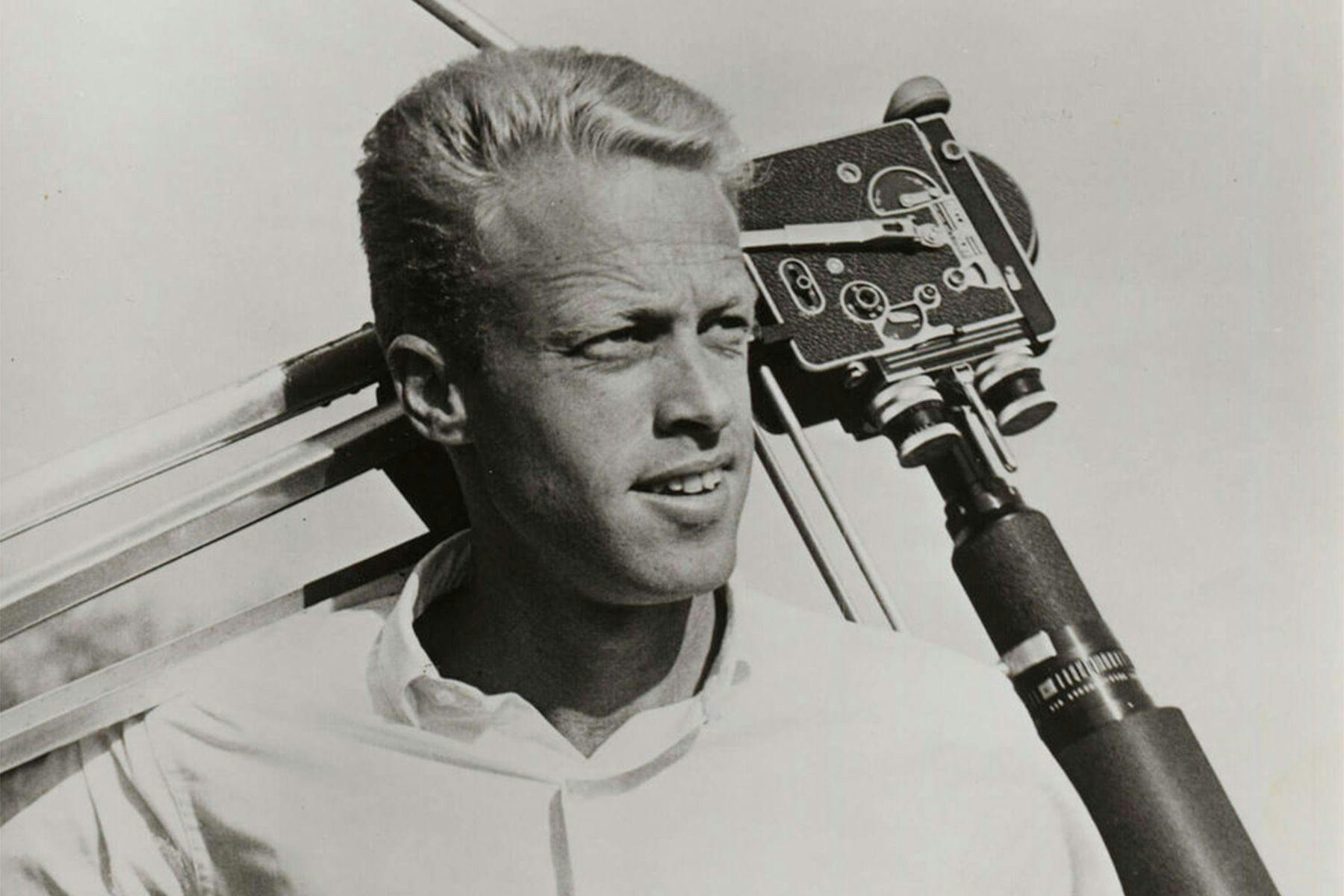
Bruce, it was recently the 50th anniversary of the original Endless Summer going on general release in theatres, and you guys have put together a anniversary book/dvd package to commemorate that.
It’s a book and then a bunch of…stuff! Memorabilia, that they found up in my attic.
That must have been quite some stash up there!
Yeah! I used to give it all away, and then somebody mentioned that it was valuable.
Before we get into The Endless Summer story, can we just go back a little bit? How did you get into surfing? Because you’ve been on record before saying that your parents weren’t huge fans of the beach. How did you get involved with the beach, and the surf community?
Like probably a lot of kids in the early fifties, I started bodysurfing. We’d moved down to Naples in Long Beach, and I used to swim across the bay and go to the beach and bodysurf. Then you start to surf mat, and one thing leads to another until you finally get a surfboard. That was probably in the early fifties – 1952 or 53, something like that.
That’s a real golden age for surfing, particularly in the area in which you lived and grew up surfing. How, from a love of surfing, did you get into surf filmmaking and the start of your journey towards The Endless Summer?
Well, I had a little 8mm film camera and originally it was taking film to show my mom – “Look at this! This is what I’m doing!” And then when I was in the service in Hawaii (editors note: Bruce was a submariner in the Navy, based in Honolulu) I made a little 8mm movie over there and edited it and put music to it. We’d show it at Dale Velzy’s surf shop in San Clemente and charge a quarter or something. That’s really what got me started. Velzy was saying “Hey, why don’t you make a regular, proper surf movie in 16mm?” and so he talked me into it and put up five grand and that was the budget for the movie and my living expenses for the year. It went from there. That was Slippery When Wet, in 1958.
So how did you then go about promoting those films? Because you made a series of films through the end of the fifties and into the sixties didn’t you?
Well originally we’d just go and staple posters to the telephone poles and stuff, and get whatever free publicity we could get. The Slippery When Wet posters were sort of a heavy cardboard with an odd shape, and when we were in Pasadena we went up and down the street in the middle of the night and put them all up and they sort of stuck out like ears. We came back in the morning and they were gone, because the kids would come up and take them, so we ended up having to put posters in the windows of stores where they couldn’t be stolen.
So there’s a fair bit of memorabilia that was pulled off lampposts prior to you saving it in your attic?
Yeah!

The Endless Summer really broke the mould in terms of surf movies and spread out from surfing to become a more widespread movie. Where did the idea for The Endless Summer come from – how did you develop that from the work that you were doing previously?
Well originally we were just going to go to South Africa and meet up with John Whitmore, and then it turned out that it was $50 per ticket cheaper to go to Cape Town around the world rather than LA to Cape Town and return. So then we started scouring the travel agents to find out where we could go where there might be surf. We arranged the trip so that we had these long layovers on purpose. We’d get to some place and they’d say “Oh, your flight out isn’t until the day after tomorrow!” and we’d go “Oh no! Jeez, can you put us up in a hotel or something then?” and they’d go “Not really”, so that didn’t work, but that’s how we got to spend some time in Senegal and Ghana and Nigeria and a lot of different places. It was just a surfer scam with the travel agents. And then of course it developed into the pipe dream, that if you travelled around the world at just the right speed you could spend the rest of your life in the middle of summer.
So it all really just came from trying to get the cheapest ticket that you could?
Yup!
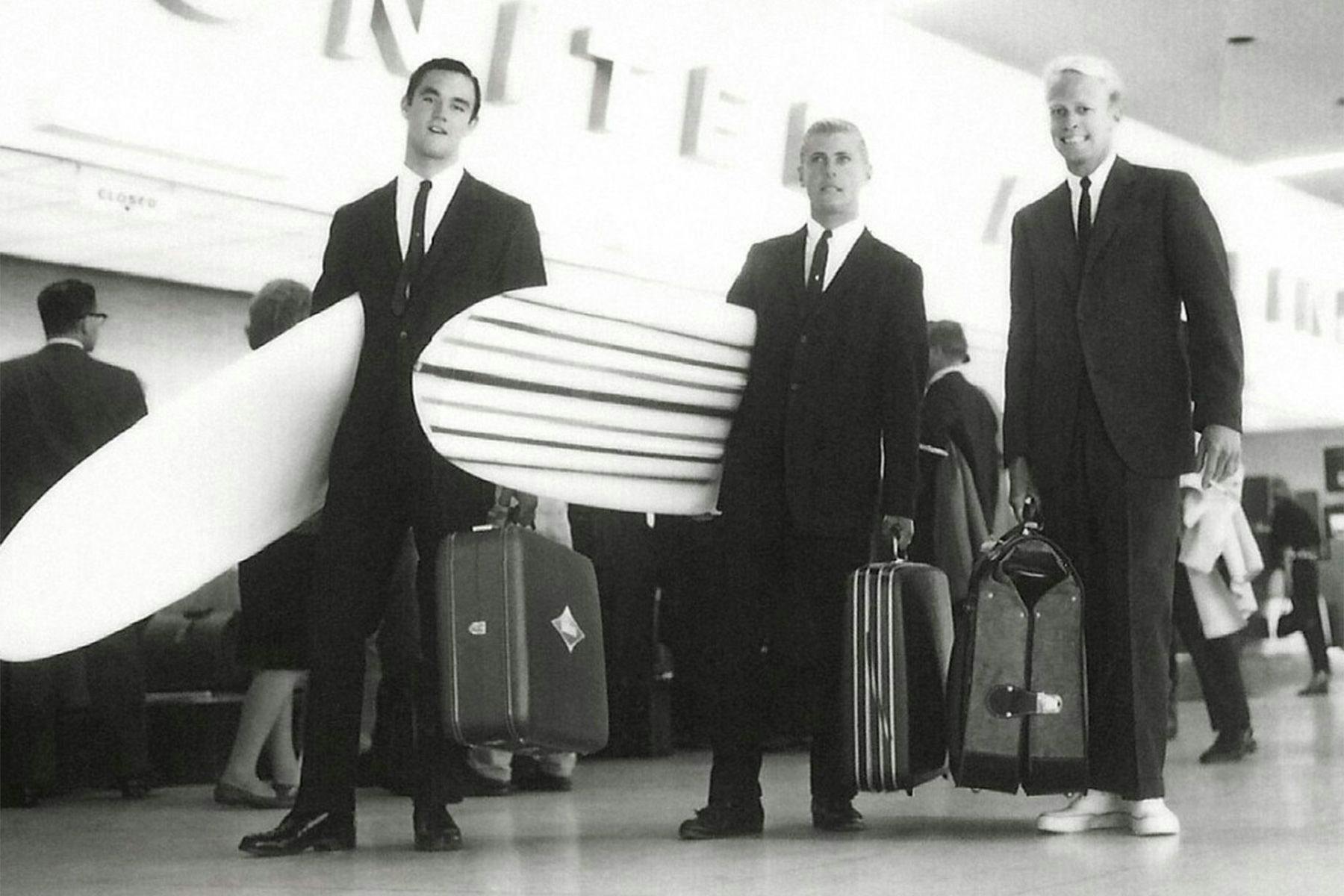
When you were planning the movie and the trip, how did you find and audition Mike and Robert?
They just happened to be available – I knew both of them, and they’d been in my prior films. A lot of people at the time, if you said, “Hey, you wanna go on a trip for three months?”, you know, they said OK, yeah. There wasn’t any big selection process, they were just available and they were friends and we went.
I guess it probably wasn’t a hard sell, chasing waves around the world?
Well, a lot of people couldn’t take off for three months. It wasn’t like they were going to get paid a lot of money or anything.

With the concept behind the movie being to chase the summer around the world, how long was the total filming schedule in the end?
The trip was about three months. We shot off and on for two years. The first trip that we made, we went to Japan with Del Canon and Peter Johnson, who was twelve years old. As it turned out, when we were done, it didn’t really fit in with the rest of the movie so we left that out. But we had the first surfing filmed in Japan too.
I was going to ask about the trips, and parts of the trip that didn’t make the cut – I knew about Japan, but am I right in thinking that you visited Kenya as well?
Yeah, Kenya. Actually part of that collection of stuff was a letter to my parents that said, “We just left Arabia, heading for Bombay, India, then on to Perth.” Well, I don’t remember even being in Arabia! Jeez… I remember being in India, briefly.
So you really trail blazed through much of the world where people are still making surf discoveries, even now.
We went to Kenya, but we were staying in some fleabag hotel and it was right when they got their independence from Great Britain. These guys were dressed up in leopard skins running up and down the street with spears and torches and stuff. We were thinking maybe we shouldn’t go out and join that party! They looked kind of scary. That was our Kenya experience.
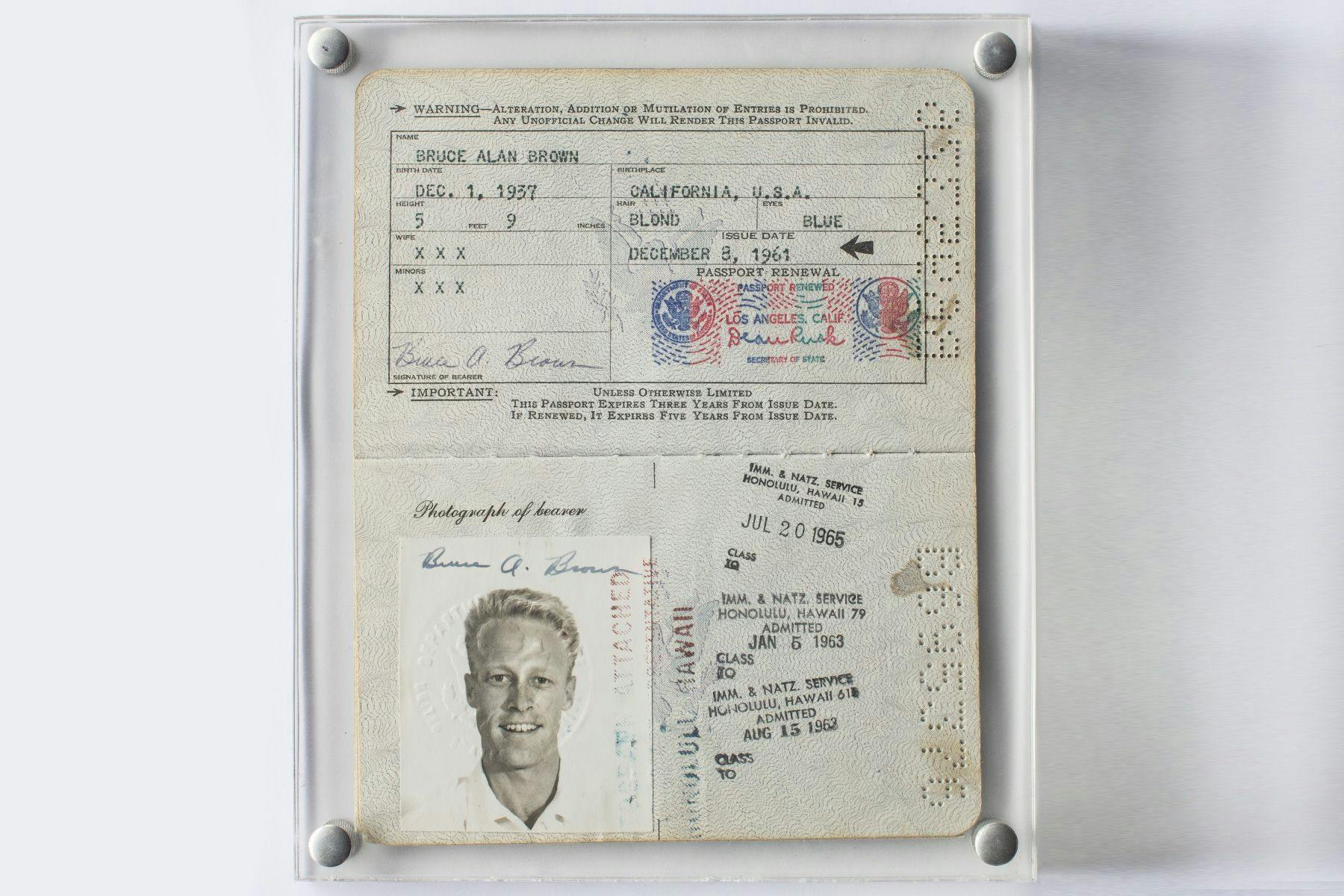
Your narration style through The Endless Summer, On Any Sunday and all of your films, has a very unique feel to it – this very warm, gently comedic style. Where did that come from? Was that just you being you, or was it a style that you aimed for?
No. When I did my first film I thought “Who in the hell am I gonna get to narrate it?” because I wasn’t even thinking of myself, and then I figured that a) I can’t afford anybody and b) I might as well try it. As you’re editing, you’re thinking of what you’re going to say, you know, so it sort of comes naturally as part of the film making process. But I’m surprised that a lot of people liked it, because we had some film critic with the original one that said “He sounds like Howdy Doody” and then it’s funny because my son Dana, his first movie he did and he narrates his own also, they said “He sounds like Kermit the Frog”, so we have Howdy Doody and Kermit the Frog in the same family! But for the most part people like it.
Presumably with the original screenings, you were touring them up and down the coast. Did that give you an opportunity to refine that style and to adjust the script until you settled on the one that worked best?
Well first of all, we didn’t have any script; didn’t even know what a script was. For all of the live screenings of my movies I had a little tape recorder with the music on it, and I’d sit up on the stage, look at the film on the screen and narrate the thing live from off to the side of the stage. Doing that hundreds and hundreds of times, you kind of get a feel for it and also, if you say something stupid and the audience groans, you remember and you don’t say that again! A lot of times something’ll come up that you didn’t think of, and you’ll say something and people will laugh, and you remember that. It just kind of evolved.
So how long were you touring the movie, doing live narration before you recorded the narration and set it down on film?
Probably a year and a half, for The Endless Summer. The old ones, forever! We finally put soundtracks on some of them so that we could rent the movies out to schools and what not, but that sort of came probably in the sixties sometime.
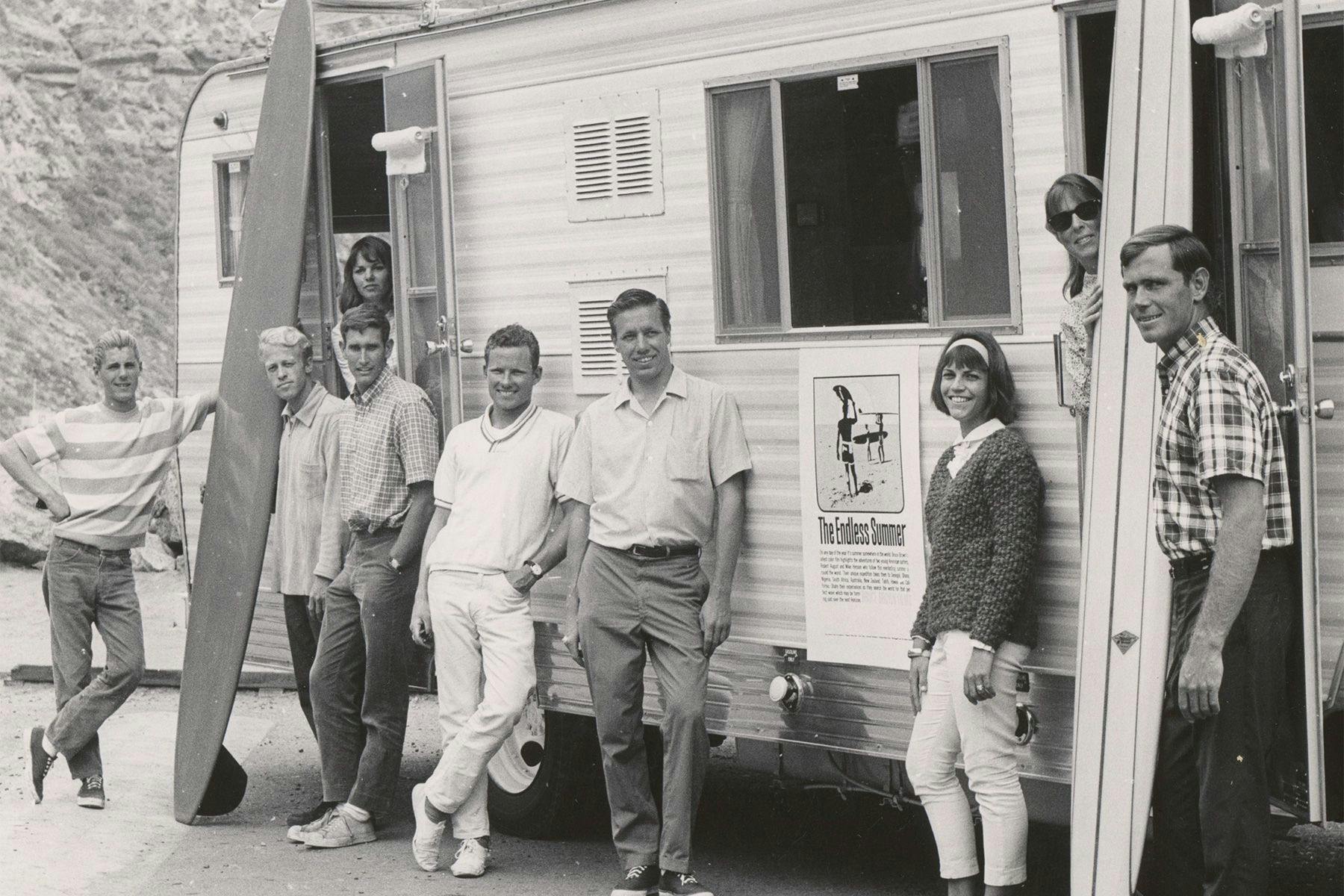
When you set out, did you know that The Endless Summer was going to be a bigger and very different movie to those that you’d been making previously, or did you originally just think that this would be the next in the sequence of Bruce Brown’s surfing movies?
No. We spent two years making the thing, when we’d normally done it all in a year. The whole idea was that it was going to be better than anything that I’d done so far, and maybe also the last one that I did because I was getting kind of burned out.
Just to put it into context, you really created this idea of going off and chasing surf around the world. Moving into the 1970s that almost became the hallmark of what surfing was about, but that wasn’t so true during the mid 60s. Did you create the concept of The Endless Summer with any idea that it might turn into something so culturally important to surfing as a sport, or was it just a case of “This’ll be a fun idea”?
From early on, from the very beginning with my surfing, we were always exploring and trying to find new surf spots. Originally it was just California, up and down the coast. Then Baja, Mexico. But that was always the quest, y’know, looking for new surf spots. The Endless Summer was just the same old thing.
You just mentioned then that you were feeling a little burnt out from the work that you’d been doing in the surf industry. You took a sizeable chunk of time out between The Endless Summer and Endless Summer II, and I’m aware that you explored some of your other passions, producing On Any Sunday. What else were you doing in the time between The Endless Summer and Endless Summer II?
Well, all the stuff that I didn’t have time to do when I was busy making movies! I started swordfishing – I had a swordfish boat. And then of course riding motorcycles and stuff. After we did On Any Sunday, you’re busy so you don’t have time to ride the motorcycle any more, so after that was done I started riding motorcycles again and entering races and all that kind of stuff that I couldn’t do when I was doing the movie. So I just always made movies about whatever I was interested in.
You mentioned that you got involved with swordfish fishing. Where were you based when you were doing that?
California – Dana Point. We were fishing at the Channel Islands. We had swordfish boats with Mark Martinson who was a surfing friend of mine. You harpoon them. It was, y’know, something that I’d always wanted to do, and I had the time to do it. What people don’t understand is that with The Endless Summer I spent two years making it, then we sent two years showing it, and trying to get it in theatres, and after it got in theatres it was two more years going around the country promoting the movie – so it was basically six years of concentrating on nothing but that movie. People don’t realise how much time we put into it.
In terms of taking a slight step back from that – from being so involved in The Endless Summer for that six year period, the next movie that you made that you mentioned was On Any Sunday which was similar in style being a motorcycle movie that covered an awful lot of ground around that culture. The film was Oscar nominated and you worked with Steve McQueen producing that, probably at the peak of his fame. I was going to ask how you got involved with working with Steve and really what it was like having him on-board on that project?
Well, you know, I didn’t even know the guy. I was just a fan of his movies like everybody else. I just went up to his office in LA when he had Solar Productions, and I told him what I wanted to do. He goes “Oh cool, what do you want me to do?” and I said, “Well, pay for it!” He said, “Hey man, I make movies, I don’t finance them!” I said “If you don’t finance it, you can’t be in my movie then,” He laughed and said he’d call me tomorrow. He called up and said, “Let’s go for it”. So, you know, we gave him a budget and he put the money up and appeared in the thing, and we became like really good friends for years afterwards. He was great to work with. He never complained. I’d say “Hey, Steve, we’ve got another race coming up for Elsinore, you wanna enter the thing?” and he’d go “Well, don’t tell anybody, but sure, that’d be cool”.
I’ve read a bunch of books where the say that he had a dark side and this and that. I certainly never saw that. He couldn’t have been more supportive. He used to come down to Dana Point visiting all of the time, and if I were up in LA I’d stay at his house. I remember he came down when we had a cut of On Any Sunday and he came down with Freddy Fields who was his agent at the time. They looked at the movie and he called up the next day and said that Freddie of course had said “Maybe it should have more girls in it” and this and that. Steve said, “What do you think of what Freddie said?” and I said “He’s full of shit!” and he asked why I’d said that? I said, “Because he wears gold shoelaces!” Steve said, “You can’t judge anybody by their shoelaces”, and I said, “Of course I can”. So anyway, about a year or two later I read in the paper that Freddy Fields embezzled money from Steve or something, and Steve called me up and said, “Did you really know that from his shoelaces??!”
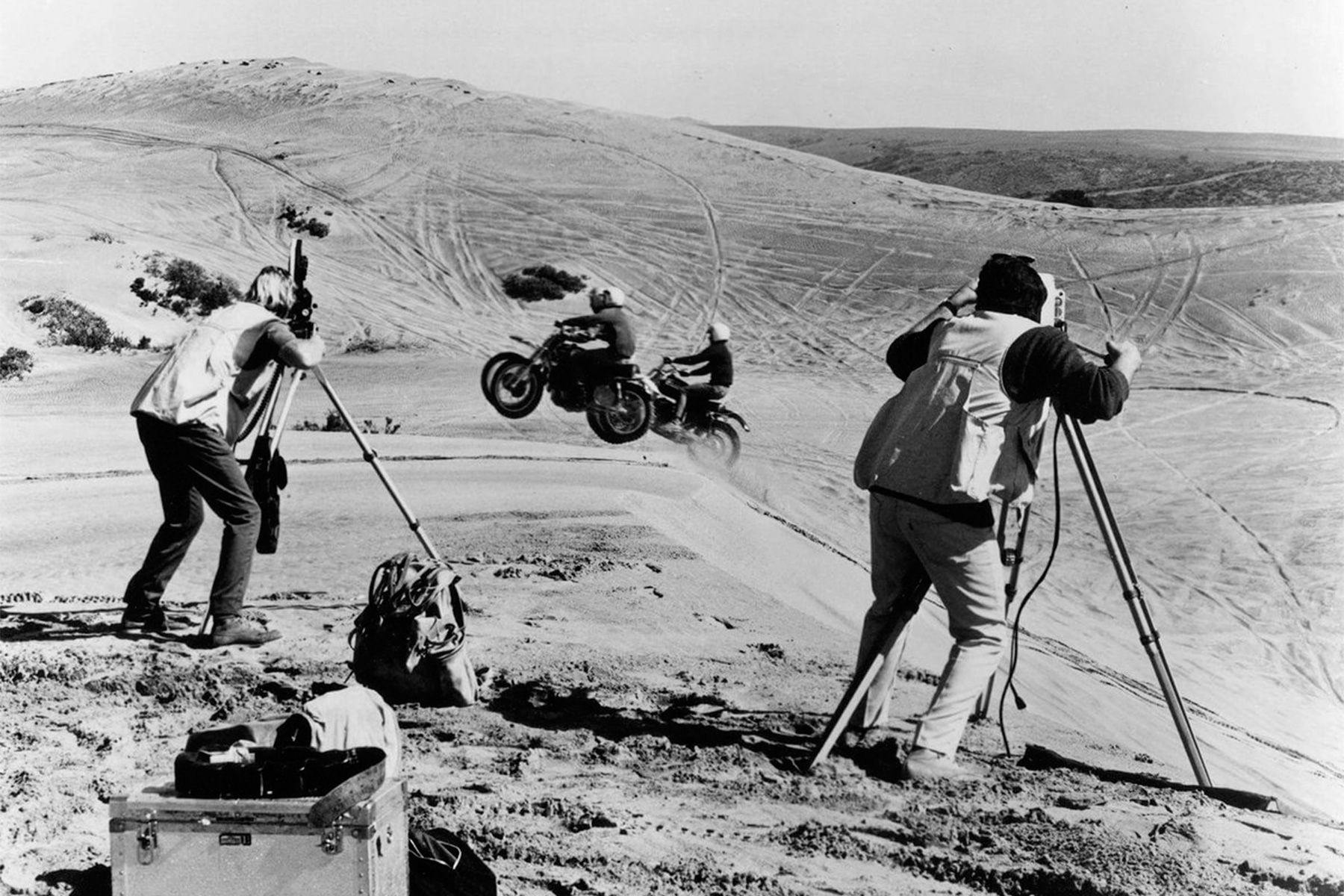
We’re just going to move back to talk a bit about the book. I’m really amazed that you kept so much of the ephemera from the trip. Was that with a view to one day producing a book, or is that just the way you are – are you fairly nostalgic about things and do you keep them in boxes? How did you end up with this mass of material that Dana’s been able to weave into this project?
Well basically, I’m just too lazy to throw stuff away, you know. The inspiration for the book was this young fellow in Spain, Manuel, for part of his school project. He did this book and he sent it over to Alex who’s the guy that does the licensing stuff for me, and it was amazing. It was full of photos and stuff that he’d got off the internet, and maps and fold out pages. It totally blew me away. Holy mackerel, it was just a school project! So we went from there. Alex brought the guy over and Jay and Bruce, the book’s publishers, got hold of him and they collaborated on the book and collection. I had very little to do with it, to tell you the truth, I mean other than collect all the old crap. But you know, Bruce went to Hong Kong as the books came off the press he inspected them to make sure they were perfect and weighed them as they had to weight to within a gram to make sure that there wasn’t anything left out. They came up with some old 35mm film and they cut strips out of it and put it in the collection in a little magnetic holder – all kinds of stuff. Like I say, they were showing me stuff and I was going “Uh huh, that’s cool, now what?” I had very little to do with it, to tell you the truth!
Did Dana then have to spend an awful lot of time sorting through your loft?
No, it was Alex who went up in the attic and rummaged around and took a bunch of stuff. Dana wrote the copy for the thing. I think that the guy that collected all the stuff was Alex Mecl because he was doing licensing stuff and he went up in the attic one day and went “Jesus! Can you believe the stuff that’s up there? Can I take some of it?” and I said “Sure! Take it all!” He kind of categorised it and what not, so that it was available to put into the… I hesitate to call it a book, because it’s more of a collection of stuff.
Was he finding things – items and photographs – that you’d forgotten about? Was it really nice reliving some of those memories?
Yeah, but I don’t even remember a lot of it. There was a letter that I wrote to my folks, and yeah, I think you have selective memory too, y’know? If you talk to Robert about some of the things that we did, and then to me, you’ll get two different stories. It’s the same story but, you know, two different versions of it.

Was there also a re-edit or re-master of the old movie and was it cleaned up at all?
Before it went to theatrical film, we changed a little bit – the narration may be a little bit different, but it’s pretty much the same thing. Through the years, as it went from VHS and then onto DVD, it was improved along the way, quality wise.
The book and all of the memorabilia that accompanies it in the box set took five years to produce, and each copy is signed by you, Robert, Mike and John Van Hamersveld (who designed the iconic poster). Were the books shipped around, or did you all meet up to sign them?
The signature pages were sent around separately before the rest of the book was printed, and then sent to the printers before the books were bound. It would have cost too much to ship all of those completed books.
Let me tell you, signing all of those things was a pain in the ass! I mean, it was giant cartons and you’d sit there and sign the things for an hour and you’d look and you haven’t made a dent in it. I think it was seven cartons, so it really was a lot.
Is there a whole bunch more stuff and memorabilia from your travels on Endless Summer II that we can look forward to one day?
Yeah, probably! I’d have to go up in the loft and look, but it’s too hot up there so we’ll have to wait until wintertime!
Bruce, you touched earlier upon a letter that you wrote home to your parents. Am I right in thinking having read a bit about the book that that was shortly after your session at Cape St Francis?
Uh, yeah. When was it? December 9th, 1963. Yeah, that’d be after Cape St Francis.
So pretty much bang in the middle of the South African summer. Did you have any idea when you were touring that part of South Africa quite what you might find from having looked at the map? Did you know that you’d struck gold when you saw those waves reeling down the point there?
Oh no. The Cape St Francis surf only lasted for a couple of hours, and then we stayed over and the next day it was blown out and no good. I realised that it was really special because I’d spent most of my life looking around for surf and you rarely find anything that’s as good as Malibu or places that already existed. At the time, finding a new wave was a big deal, so I knew that it was something really special. In fact, that was why we did the sand dune thing afterwards. We went and walked across the dunes afterwards because I knew that I had to have something to lead up to it, to show how special it was to find a place like that.
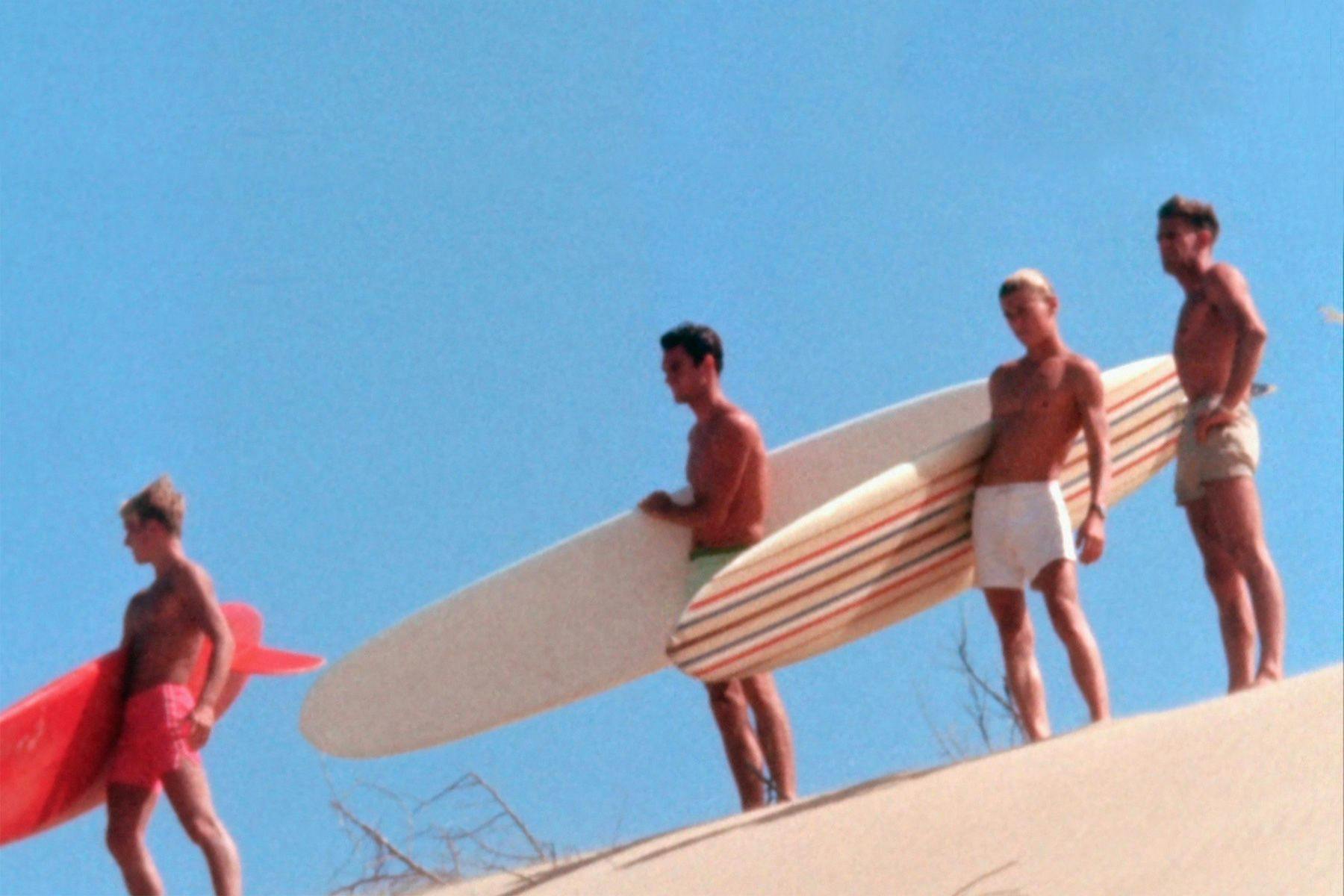
What was it like going back to that locality when you were filming Endless Summer II, when you visited Jeffreys Bay?
Well, it had changed! The first time, there was nothing there. There was a little camp with rondavels that cost $4 per night and came with a horse. There were six or eight of these little huts, and when we went back in the 90s there were condos, fancy houses and it made Newport Beach look like a slum! And of course they planted the sand dunes because before the sand dunes were bare and the sand would blow out and cover up the cobble rocks and made a smooth bottom. But now the sand doesn’t blow out there because it’s been planted so it doesn’t fill in the cobbles and the wave now is not as perfect as it was. It’s kind of lumpy and bumpy, but still gets good from time to time. But now that J-Bay’s been discovered, people don’t go there that much.
When you travelled around, you went to quite a few well-known places but to a few, really kind of weird and wonderful places. Are you surprised at some of the ones that have really taken off and become destinations for the surf world whilst there’s a whole bunch of others that just really haven’t taken off in any way, shape or form, like Ghana. Do any of those particularly surprise you?
Um, yeah well I haven’t really kept up with it but apparently Senegal’s got all kinds of good surf, and a lot of those West African places there’s known surf spots and what not. You know, it’s amazing now the number of places that people have discovered where there’s waves. It always pisses me off because every time I found a wave it was always a right, and I’m a goofy footer. So now, all these damn great waves they find in Indonesia and stuff – they’re all lefts! I’m thinking “Crap! How come that didn’t happen when I was around?!” But you know, we used to make a lot of trips to Mexico. We’d find a place and the surf would be like half an inch and you’d be thinking “This could probably be a good surf spot, but there’s no swell” but some of those places we went to it turned out that they’re world class surf spots now, with hotels built there and stuff. When we were there it was just a fish camp, nothing there, and no surf, but you could tell that there probably would be surf if you got there on the right day, but we never got there on the right day. For every surf spot we found, we missed out on about a thousand!
You should’ve been there yesterday, Bruce!
The classic was, I had this commercial fishing boat and it was a gill-netter. We had a permit to fish in Baja, so we’d go down fishing white sea bass and we’d anchor at Abreojos. We’d always take surfboards with us, and we’d go down the coast about 40 or 50 miles to a reef they called the hump, and we’d set the nets there in the morning and then pound back up sea against the wind back to the anchorage3. There was an anchorage called San Juanico that was down below, but the guy we bought the boat from, Homer Moore, he had a Baja chart and he wrote the spots we could go to but with a big arrow “Don’t go in here because they’ll steal your nets and do this and do that”, so we never went in there. Finally I sold the boat to Hank Boyde, and they went into San Juanico and he comes up going “God! It’s a great place! There’s surf and everything!”
“What?” Turns out it’s Scorpion Bay.
So, we could’ve gone up sea in the morning from Scorpion Bay, set the nets and then down wind in the afternoon back to the bay and gone surfing. Gaaa, it’s unbelievable! But we didn’t go in there because Homer Moore wrote on the charts “Don’t go here”.
That’s my surf exploration history: I’m a loser!
It sounds as if you’ve explored Baja any which way, really: by motorbike and… am I right in thinking that you did a trip in an ex-army amphibious truck at one point?
Yeah, with Barney Wilkes who was a dentist in San Clemente. That was in the fifties and it was an army duck that he’d welded a bus body onto and took all of his drinking buddies from Laguna down to Baja. They stopped at Tijuana and got all this straight grain alcohol, and he had a propane refrigerator in this bus. We’re going across Laguna Salada dry lake, and maximum speed was probably 50 miles per hour in that bus, and we hit a bump and the door of the refrigerator popped open and all the grain alcohol hit the floor and caught on fire. There was like a shore break of flaming alcohol going to the front of the bus where there was five-gallon gas cans. Barney Wilkes, the guy that owned it, had one of those sleep masks and was asleep in the back bunk when the thing caught on fire, so he’s running around. We all hopped out and it turned out ok, but it was, you know, a little adventure.
You survived! Did you get good waves on that trip?
No. Same deal! Robert August was with me, and Paul Gavower, another surfer. We got to Turtle Bay and the water was like 50 degrees or something. We were thinking, “What the hell’s going on here?” We didn’t realise at the time that the water along the west coast of Baja was actually colder than California a lot of times. It was another one of my failed surf journeys.
You’ve just got to go half way across the world to have a successful one!
That’s right! You can usually find some surf, but it’s usually not real quality stuff, not as good as the places that we already knew about.
Just to turn the conversation back towards The Endless Summer: thirty years on from doing the original you made Endless Summer II with Dana, and with Wingnut and Pat O’Connell. Where did the impetus to come back after this long break away from making surf movies come from?
Well, I think it was Dana. He was interested in doing it. People had been bugging me for years, you know, “Oh, how about making a sequel to The Endless Summer?” and I was thinking “Oh man, give me a break!” People would call up and the basic conversation was:
“We’ve got a great idea, can we meet and talk about it?”
“Why don’t you tell me on the phone”
They’d finally tell me.
“So, I make the movie and we split the money, because it was your idea, right?”
“Yeah!”
“I don’t think so!”
Anyway, finally to shut the conversations up, I went:
“Put up a million bucks and we’ll talk about it”
So finally, somebody did, and then Dana took it on. I probably wouldn’t have done it, except he wanted to do it. Mike Hoover, who was a friend of mine, I put him in charge of photography. I was probably just going to sit in a chair on the beach and point, but it didn’t work out that way!
That film was certainly the impetus for us and lot of people who we know really getting the bug for surf travel all over again. Most of the year we’re based in Costa Rica, just a little bit south of Tamarindo where you guys went, and we still see people coming down there because that’s where you went on the Endless Summer II shoot. The influence, 25 years or so on, is still there, which is very cool to see.
What was neat about it was recreating the original journey, but with different surf legend guys like Nat Young, Gerry Lopez, and John Whitmore in South Africa. Those guys were great; they organised all kinds of stuff to shoot, so if there was no surf we could go and do this or do that. It was amazing, compared to the Hollywood people who are supposed to be able to do that sort of thing, how good they were at doing it. We shot it on 35mm film, which was a pain in the ass because the cameras are huge – I’d never do that again.
With the scheduling, you said that with the original The Endless Summer the schedule was largely born of trying to get the cheapest round-the-world ticket that you could. With the scheduling for Endless Summer II where did your destinations come from for that trip?
We just figured out where we wanted to go to begin with. We’d actually go and shoot and then come back, so it wasn’t a continuous thing, because with that kind of equipment it would have been almost impossible. We’d go to France and come back, then go to the next place and come back, and see what we got then head out again.
Bruce, you mentioned then that the 35mm cameras that you used during Endless Summer II were a lot bigger and you had more kit compared to when you shot The Endless Summer. Can you talk us through some of the kit that you used during The Endless Summer, because I understand that a lot of the waterhousings that you used you made yourself, and the POV shots that you got whilst surfing…can you tell us a little bit about that, please?
Well it was pretty simple: we had a wind-up Bolex and a tripod, and a suitcase full of film, and then we had a little 50-foot-load home movie camera (but 16mm) and a little water box that I’d built for it, and then an old Bell and Howell with another water box that we used, but I don’t know if we even took that on the trip. It had to be things that we could actually carry.
And am I right in thinking that during The Endless Summer you posted reels of film back home, apart from the Cape St Francis sequence?
I think we sent one bunch of film back, and that was it. The rest I carried with me. There’re photos in the book of all the old cameras and housings and all of that stuff.
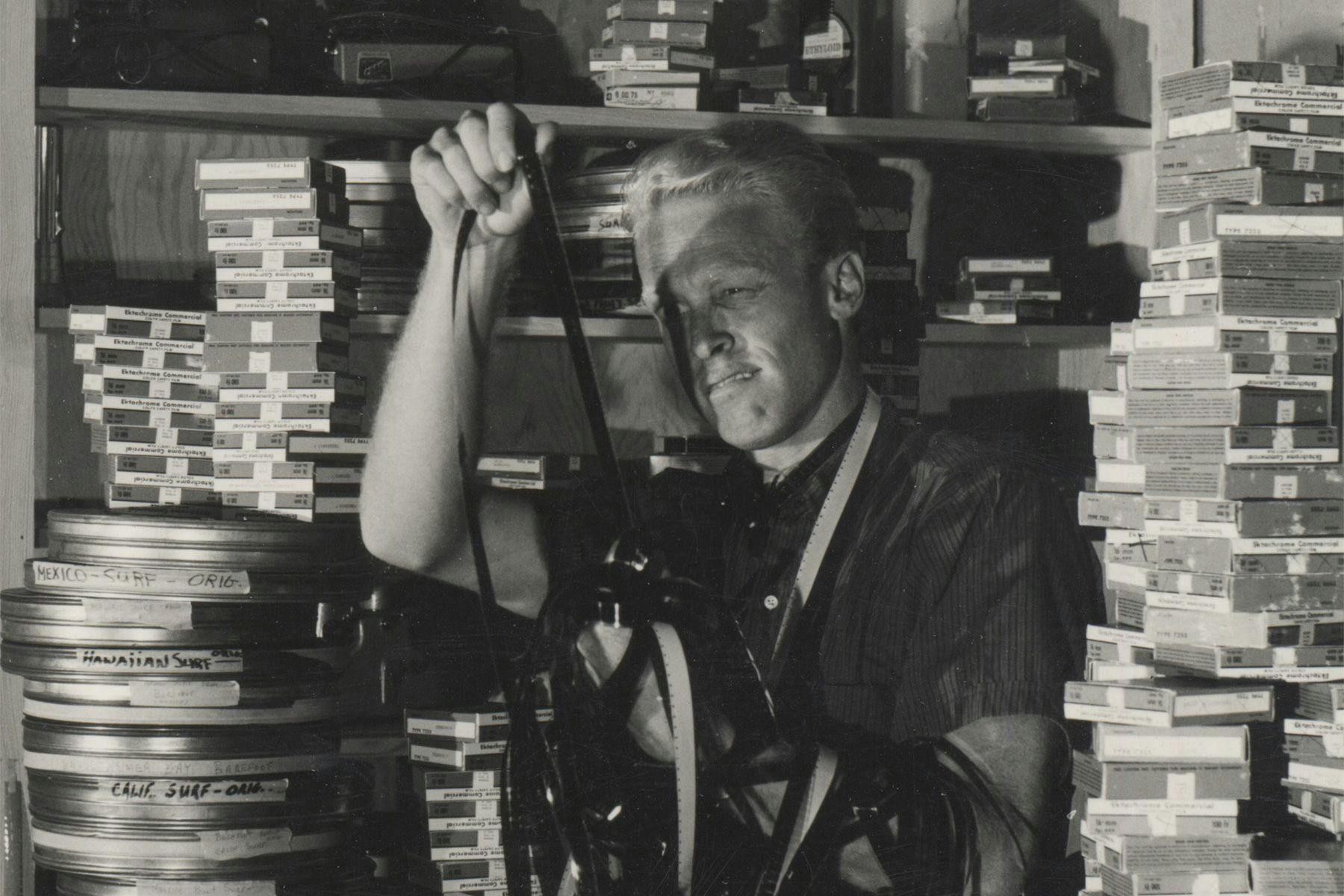
Ru and Asher from the Surf Simply podcast spoke with Robert “Wingnut” Weaver earlier this year, and in part of their conversation they discussed his reaction to the seaplane crash in Costa. It’d be really nice to get your take on that part of Endless Summer II. It’s such a famous scene, and I was just wondering what went through your head when you watched that happen. Were you watching it and thinking: “I couldn’t have scripted that if I’d tried, that’s amazing”, or did you think: “Bang, there goes my budget, my movie and my insurance premium”?
Haha, no, you know I just aimed and fired! Like Robert August used to say, “What’s the big deal, you just aim it and push the button! Anybody could do that!”
Was it a slightly different deal second time around working with a Hollwood studio, and their ways of working and expectations?
It was a nightmare. Don’t get me started on that. It was like… you know… they’d book plane flights and we’d say, “How come we’re going to Bali, via New Zealand?”
“Oh, we thought you guys would like to hang out for a while”
“Hang out, for eight hours in the airport? What the hell?”
I finally got my own travel agent to book tickets, and when it came to greasing the wheels – so that when we’d get to the airport and we didn’t have to be trading t-shirts to get the excess baggage on for free – that didn’t work either, so Hoover and I are like still trading t-shirts and bribing the baggage handlers and all that. Nothing changed, other than I was too stupid or stubborn to say that because they said they’d take care of that, they’ve gotta do it. Well, what do you do when they don’t do it? And they didn’t. Hoover from the very beginning would go, “Just do it yourself, those guys are gonna screw it up”, and they did. But anyway, we got it done.
You didn’t end up having to stick any of the boards out of the boot of the taxi, like the first time around?
They’re handing me a note…
“www.endlesssummerbooks.com $495 limited edition, should be sold out by the end of the year. Buy them now!”
Haha! Did you get that?
We got that!
Before we go, we’ve asked you various questions, but what’s your fondest memory from making The Endless Summer?
Um, I don’t really have any specific one, just I guess maybe the first time that I showed the movie. Normally in my surf movies when they were over people would clap and cheer and stuff. When I showed The Endless Summer for the first time to a paying audience and when it was over with, there was dead silence. I thought: “Oh crap, they hate it. All of this work and they don’t even like my movie…”
And then all of a sudden after a few seconds they all started clapping and cheering and I thought phew! That was probably the happiest day of my life because I thought I’d failed for those few seconds before they started clapping. So maybe how about that one?
Bruce, thank you so much for your time, and thank you so much for your contribution to surf culture.
The Endless Summer Numbered Edition Box Set commemorates the 50th Anniversary of the global release of the 1966 film, and is the reason why we were invited to interview Bruce.
A limited edition of 1,966 copies of the book and box set have been produced (all of which are numbered and signed by Bruce Brown, Robert August, Mike Hynson and John Van Hamersveld) and include a beautiful book, world map of the film’s route and destinations, posters, storyboards, reproductions of letters, tickets and passports stamps, never-before-seen photographs, flip-books of key scenes, a re-mastered DVD of the film and a strip of five cells from an original show reel. It’s a fitting tribute to the most influential film in the history of surfing, and to the iconic filmmaker behind it.